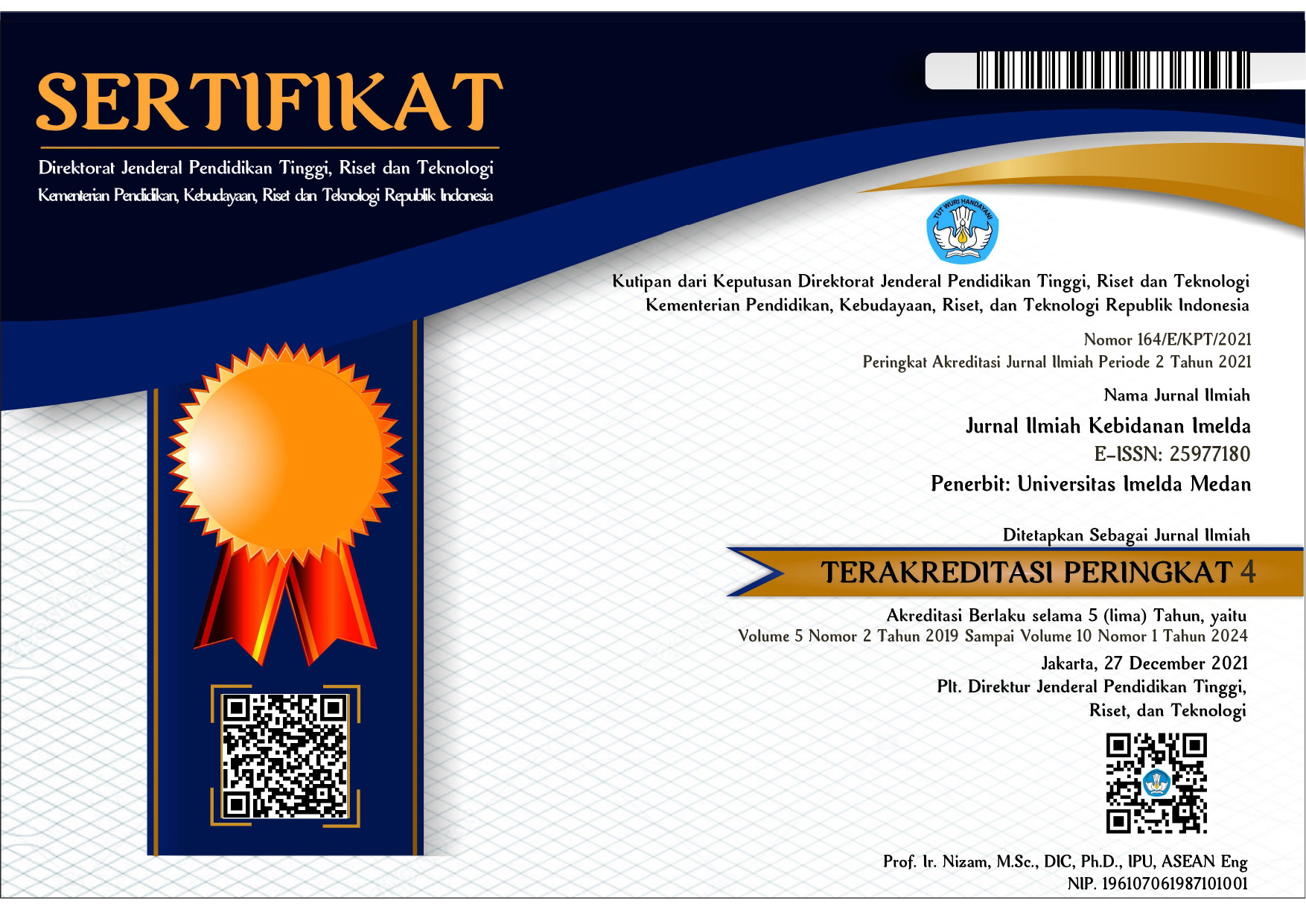FAKTOR-FAKTOR YANG BERHUBUNGAN DENGAN KEJADIAN PERDARAHAN POST PARTUM DI RSUD DR. PIRNGADI KOTA MEDAN PERIODE JANUARI 2011–JUNI 2015
Keywords:
Factors; Post Partum Hemorrhage.Abstract
Postpartum hemorrhage is an important cause of maternal mortality, especially in developing countries. The frequency of postpartum hemorrhage 5-15% of all deliveries, cause atonic uterus has the highest number presentation of the other 50-60%, retained placenta 16-17%, 23-24% retained placenta, birth canal laceration 4-5%, and blood clotting disorders 0,5-0.6%. while the percentage of bleeding due to anemia during pregnancy is 15-20%. Given the magnitude of the adverse effect of iron deficiency anemia in pregnant women and the fetus, therefore it must needs be enough attention to this problem. This study aims to determine what factors are associated with the incidence of postpartum hemorrhage in hospitals. Dr. Pirngadi Medan period January 2011 - June 2015. The population in this study were all birth mothers who experience postpartum hemorrhage in hospitals. Dr. Pirngadi Medan period January 2011 - June 2015 with a total sample of 47 cases by using total sampling. The result is the result of Chi square test showed that all factors such as age, parity, education, history of childbirth, anemia, birth weight, number of children born, the immediate cause (atonic uterus, placenta rest, lacerations of the birth canal and retained placenta) related the incidence of postpartum hemorrhage with a P value <0.05. Results of multivariate logistic regression test showed that there is a relationship together and multiple pregnancy are most associated with the incidence of postpartum hemorrhage with p value 0.043 <0.05. The OR value obtained is 15.391. It can be concluded that all the hypothesis can be accepted. Results of this study should provide information to health workers, particularly midwives and the public about the importance of prenatal care, prevention of postpartum hemorrhage, and providing counseling regarding the preparation for childbirth.










